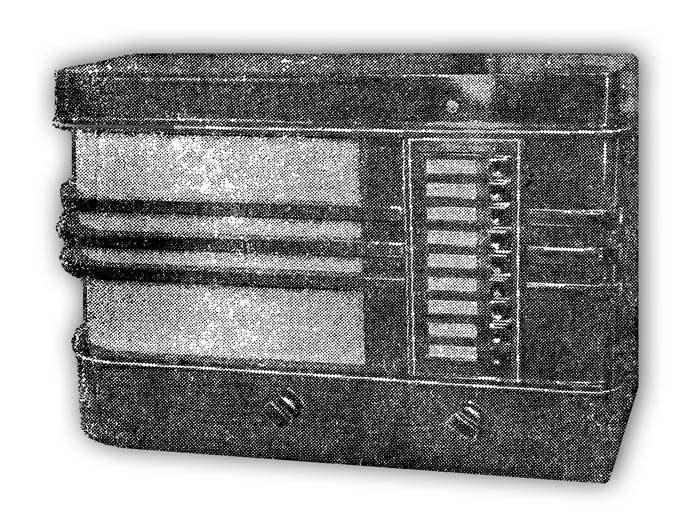Radio receiver `` IR-1 ''.
Tube radios.DomesticThe IR-1 radio receiver was developed at the IRPA for serial production at the beginning of 1940. For various reasons, the receiver did not go into production, only three prototypes were assembled. The IR-1 superheterodyne radio receiver is designed to receive eight fixed, preset radio broadcasting stations in the DV and SV bands. The sensitivity of the radio receiver of 500 μV made it possible to confidently receive broadcasting stations that were remote up to one thousand kilometers from the place of reception. The receiver is powered by an alternating current of 110, 127 or 220 volts, consuming about 20 watts of power. Rated output power 0.5 W. The range of reproducible sound frequencies is 100 ... 6000 Hz. The receiver is turned on by pressing any button of the fixed settings, while the neon lamp located in the upper part of the receiver body comes on. The receiver is turned off by pressing the lowest key. Rectangular pieces of paper are inserted into special niches to the left of the keys, on which the owner himself writes the name of the received broadcasting station. The inscription "Disabled" for the bottom key is provided by the factory. The left knob adjusts the high-frequency tone, the right knob adjusts the volume.